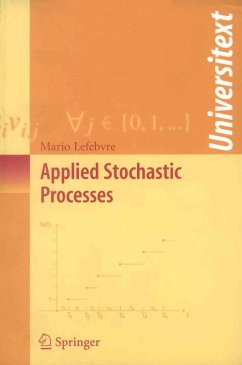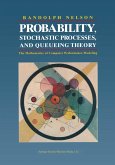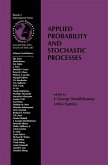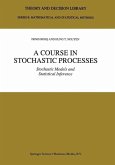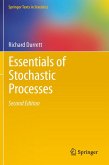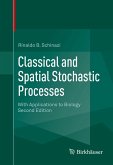Dieser Download kann aus rechtlichen Gründen nur mit Rechnungsadresse in A, B, BG, CY, CZ, D, DK, EW, E, FIN, F, GR, HR, H, IRL, I, LT, L, LR, M, NL, PL, P, R, S, SLO, SK ausgeliefert werden.
"This book is an excellent reference for those interested in how probability theory can be applied to concrete problems arising in engineering, biology, management science and operation research. ... Several tables and figures enrich the book. Turning to more technical remarks, the book is certainly very well written, the proofs are clear and the examples are often illuminating. ... This book will be valuable to graduate students or professionals ... . The large number of problems makes it suitable for self study." -- Fabio Mainardi, MathDL, April, 2007
"The book aims at providing the readers with a reference that covers the most important subjects in the field of stochastic processes and that is accessible to students who do not necessarily have a sound theoretical knowledge of mathematics. ... In addition to the examples presented in the theory, the book contains approximately 350 exercises, many of which are multiple-part problems." -- Oleg K. Zakusilo, Zentralblatt MATH, Vol. 1127 (4), 2008
"This book on stochastic processes is aimed at mathematics students ... and students from other disciplines such as engineering. ... Each chapter is concluded with many exercises-337 in total in the book. ... In general, the book is based on the trusted principles that all functions are measurable and all distributions are either discrete, or continuous, or mixed. ... this is a well-structured text with a strong focus on doing calculations and applying the facts just learned." -- Jan M. Swart, Mathematical Reviews, Issue 2008 g
"The introductory course on stochastic processes provided in this text is aimed mainly at students of (electrical) engineering and applied mathematics (operations research). ... The overall style of writing is pedagogically clear. ... Every chapter ends with numerous exercises, about 350 in total. ... Thus, the text is useful for self-study and for the intended audience of students." -- Paul Embrechts, Journal of the American Statistical Association, Vol. 103 (484), December, 2008

